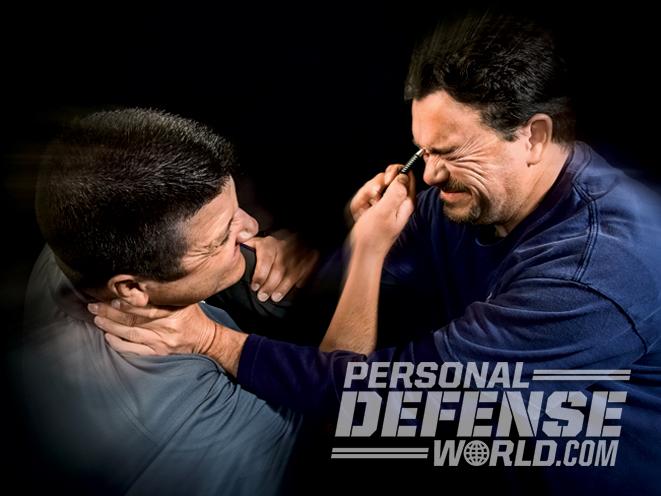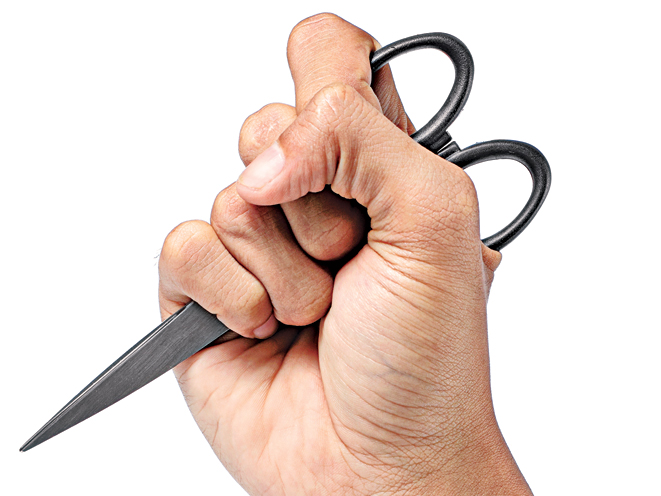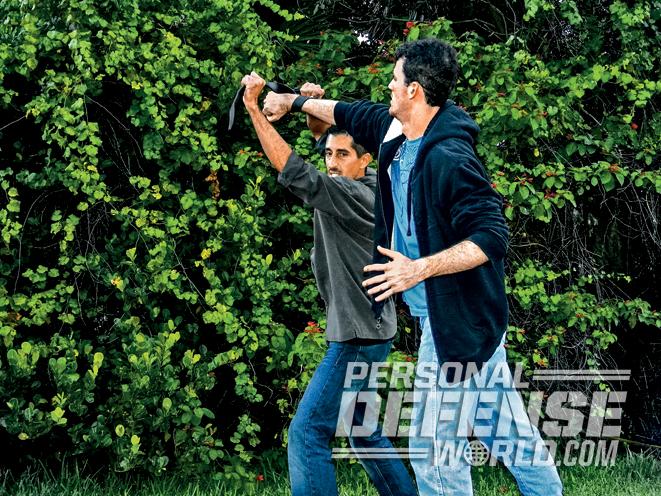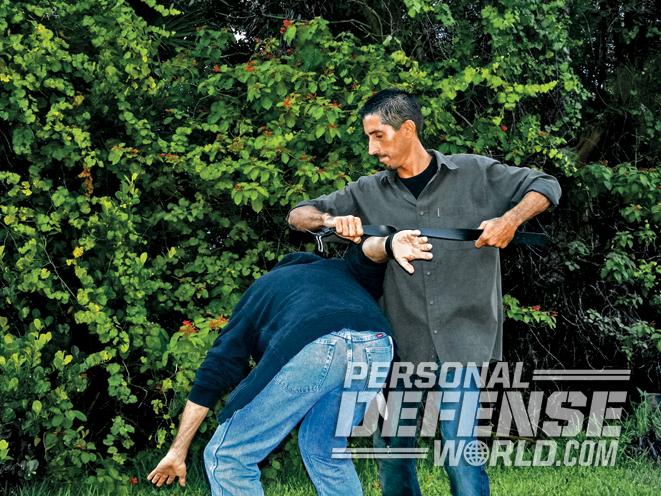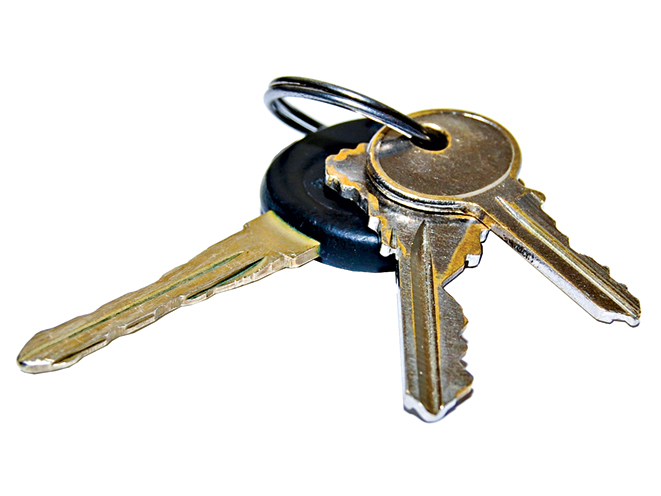It’s a hot but pleasant summer day in a small, rural town. You decide to walk to the outdoor market dressed appropriately for the warm weather, just shorts and a T-shirt. As you turn down an alleyway to make a quick shortcut, you are approached by two men asking for money.
You politely turn them down, but then they become more demanding as one of the men pulls out a knife. Instinctively, you reach for your shoulder holster, but of course you’re not wearing it today—a T-shirt could never conceal your firearm. Now what? Are you at the mercy of your assailants? Certainly not, at least as long as you remember that usable weapons are always nearby!
Improvising is the key to surviving in an uncertain world. When food is scarce, the capable survivalist will grow, forage or hunt for anything needed to feed himself or his family. The same idea can be applied to catching rainwater, digging underground, or building a natural filtration system when potable water sources are scarce. Improvising and finding a solution to problems that arise is essential for basic overall survival. What some people may not realize is that this thought process also applies to personal defense.
Advertisement — Continue Reading Below
The vast majority of weapons carried on a person’s body, whether hidden or in plain view, are pistols and knives. While carrying these weapons is an important part of a personal defense strategy, there are circumstances where you may not have a gun or knife available. These could include places where you are prohibited (by law) from carrying them, are unable to conceal them under your clothes, or you simply forget them when you leave home in the morning. The lack of a handgun or knife, however, does not mean that you are defenseless when conflict comes your way. With a little knowledge, some basic training and an open mind you can use everyday objects you encounter to help protect you and your loved ones from an unexpected attack.
Walking Tall
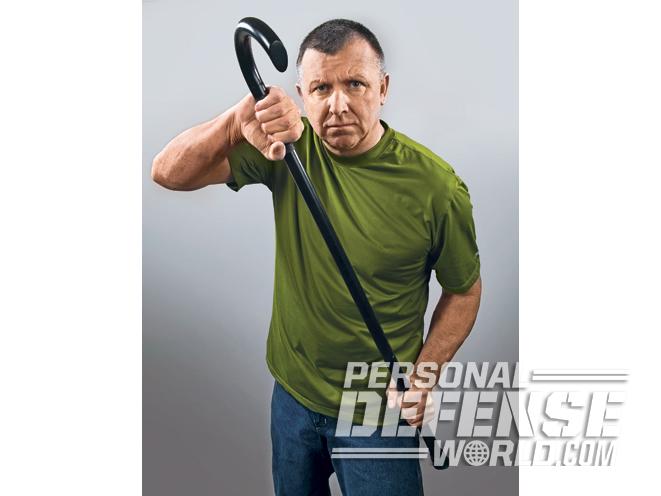
The walking stick is an everyday accessory in many rural areas of the country, especially in locations with mountainous or uneven terrain. It provides stability when an individual traverses rocky or icy terrain or areas covered in dense vegetation. Most people that see someone using a walking stick will not give them a second look, and it’s this very fact that makes it one of the most versatile defensive weapons that you can use. There is no designated handle or tip; both ends can be used for striking as well as gripping, providing options for long-range attack. Meanwhile, a wide two-handed grip allows the combination of power and precision to obtain the best results. Once the attacker is dazed from the initial strike, a follow up “butt-end” hit can be rammed into the assailant’s belly or facial area, causing instant blunt trauma. Constant alternating hits from both ends of the walking stick can create a non-stop assault, which is very difficult to escape from and counter. It’s this type of barrage that makes this “common stick” a dizzying weapon to face, and most attackers are not prepared to deal with such an onslaught.
Advertisement — Continue Reading Below
RELATED STORY: 10 Everyday Weapons to Use for Self Defense
Belt Strikes
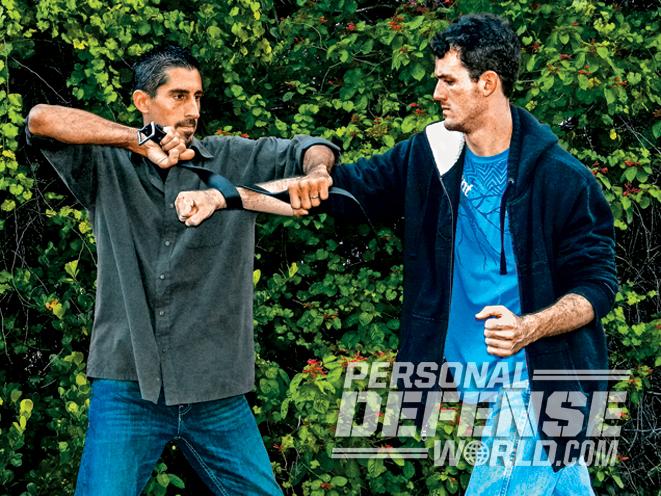
There are actually three ways to use the belt during an attack. First, wrap the non-buckle end around your hand a few times and, with large overhead strikes, swing the buckle toward your attacker’s head or weapon hand (naturally, if your attacker has a gun, just give him what he wants, unless you feel he will pull the trigger no matter what he demands) and create a figure-eight motion. This keeps the weighted buckle always moving and increases the chances of getting a solid hit. Second, bend the belt in half and with the folded end deliver a series of short whipping strikes that will stun your assailant and possibly allow you the time to escape. Finally, with some advanced training, hold the belt from each end and use the length to deflect oncoming strikes as you wrap the belt around your attacker’s arm or neck to gain control and ultimately subdue him.
Advertisement — Continue Reading Below
Yes You Cane
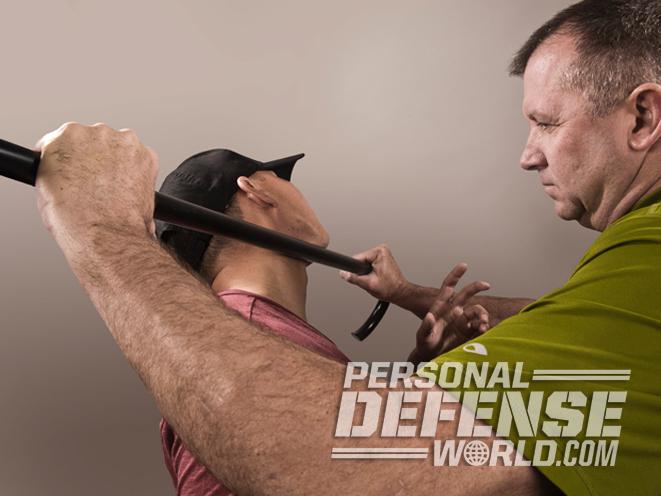
An elderly person’s walking aid is one of the least expected weapons, and it can be carried virtually anywhere. Take off the rubber end cap and hold the cane just below the curved handle. Direct your strikes to the attacker’s head and face, using the corner of the cane tip to deliver a precise hit. This will cause pinpoint damage, as opposed to hitting with the shaft of the cane, which could disperse the impact and decrease its effectiveness. Then move quickly down your opponent’s body and hit key areas, such as the groin and knees. This will disrupt his balance and stability. Rotate the cane in your hands and, with the curved end facing outward, hook your attacker’s leg and pull up and outward. This should bring him down hard to the ground.
Advertisement — Continue Reading Below
RELATED STORY: Cane Defense – Turning Your Walking Cane Into a Self-Defense Tool
Mighty Pens
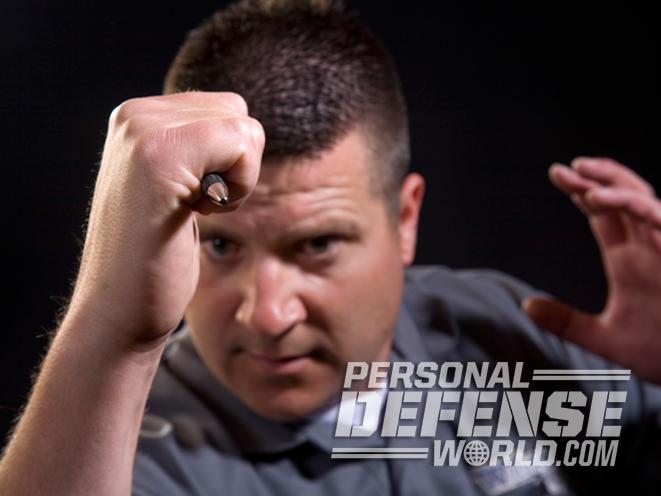
Advertisement — Continue Reading Below
They say the pen is mightier than the sword. Given the choice, I would choose the sword, but the pen can also become a powerful yet discreet weapon few attackers would notice in your hand. Hold the pen in your closed fist with one end of the pen exposed. Place your thumb for support on the opposite end. This will enable you to punch while still utilizing the pen as a secondary weapon. The tip of the pen can be used to strike vital areas of your attacker, such as his eyes, throat and groin. Also, with some additional training, you can use the pen to inflict shocking pain at the sensitive pressure points in his neck, ribs and upper arm muscles. Once he is momentarily stunned by the pressure-point application, you can then follow up with additional strikes or execute a takedown or joint lock to overcome him.
Keys To Security
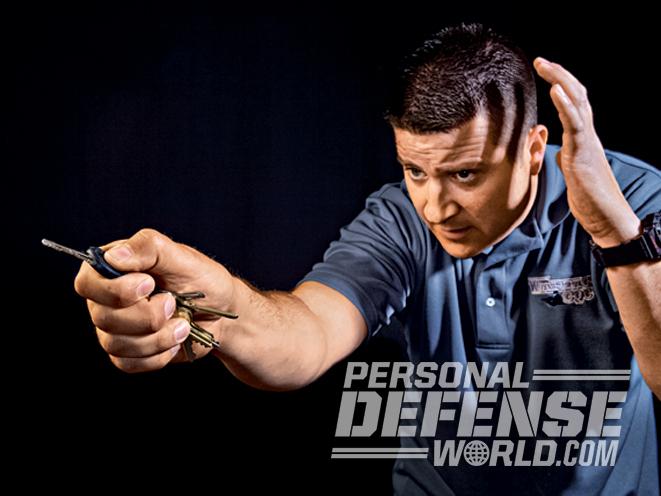
Nearly everyone carries a set of keys with them, no matter where they go. Holding your keys in your hand not only appears normal, but also belies the fact that you possess a devastating offensive weapon—ready in an instant if you are ever caught by surprise and attacked. For personal defense, let a few of the keys on the ring protrude through your fingers and press them against your knuckles for a solid hold. Allow only an inch or so to protrude in order to leave enough of the key in your hand for stability. This weapon is intended for extreme close-contact defense. Use slashing motions towards your attacker’s face as well as straight jabs into his vital areas, including his eyes, throat and groin, to create stinging and intense pain. Damage to his eyes may temporarily blind him, giving you the opening to escape.
Advertisement — Continue Reading Below
RELATED STORY: Using Improvised Weapons For Personal Protection
Options for personal defense are all around you. The key is to have the ingenuity to alter these everyday items into life-saving weapons. All it takes is a keen eye, some creativity and a little practice to convert these common items into some of your most useful tools for personal protection.
